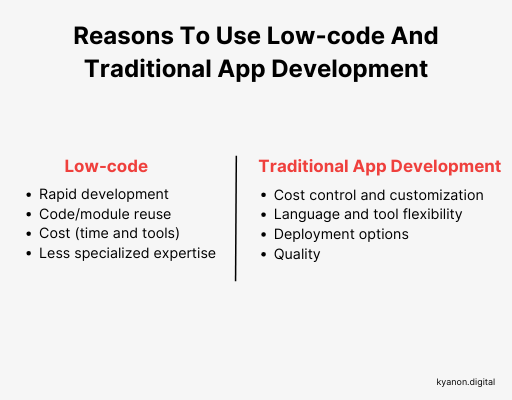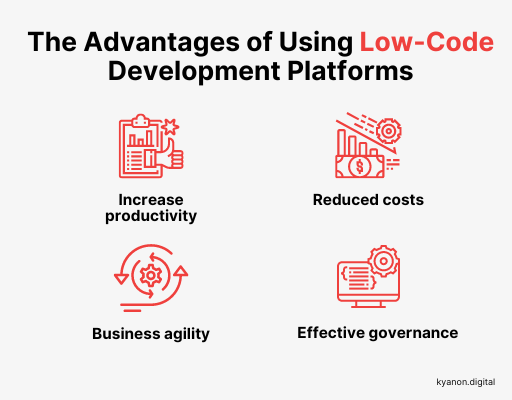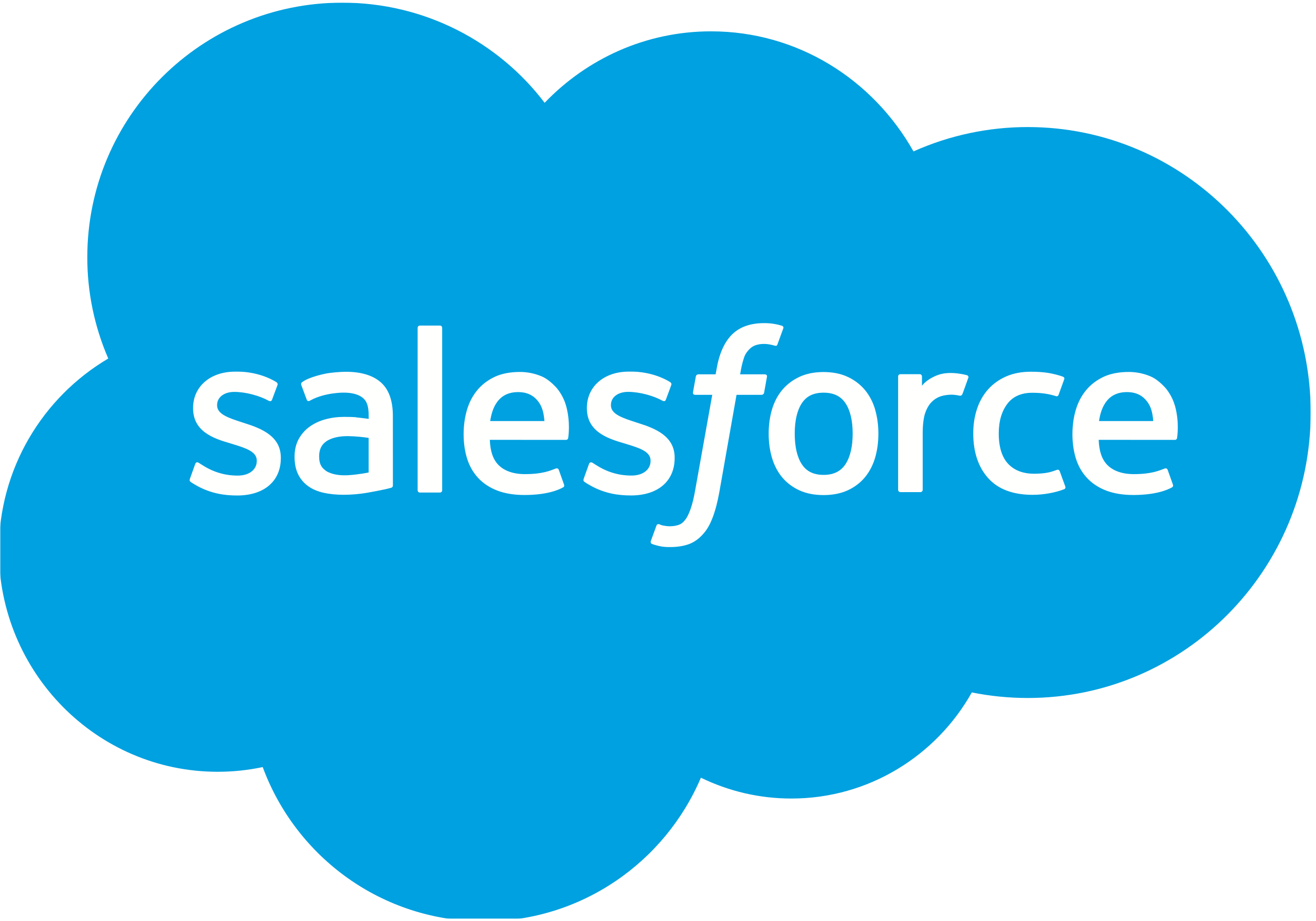Businesses must develop and keep up with the ever-changing digital era. While many MNCs, SMEs and startups increasingly recognize the need to digitie their operations, it can be difficult for those that are unable to find answers through traditional means.
Businesses in the early stages of implementing machine learning might benefit from low-code choices. They are not only simple to use, but they also speed up the development process because you do not have to write the complete code by hand. Thanks to low-code technologies, it is now feasible to design complicated programs without paying a lot of money, waiting for days or months, or hiring many engineers.

For less experienced data science teams, low-code platforms are the best solution. You don’t have to be a coding expert to create outstanding applications. Modern low-code or no-code platforms ensure that you write very little code while still creating applications that enhance innovation and drive your business.
With the assistance of business low-code development platforms, you can avoid the time-consuming hassles and build better and more effective data and AI solutions in much less time. In this article, we’ll go over this in greater detail and see how it might benefit your business. Then we’ll talk about the best low-code platforms for you.
1. What exactly is low-code development?
Low-code is a visual approach to software development that optimizes the whole development process to save development time. Low-code allows you to abstract and automate every phase of the application lifecycle to speed up the deployment of a wide range of solutions. By breaking down conventional business and IT silos (supporting continuous cooperation), your company can design solutions that match the demands of your business.
In that regard, Gartner predicts that low-code application building will be used for more than 65% of all app development functions by the year 2024 and about 66% of big companies will be using a minimum of four low-code platforms. According to Fabrizio Biscotti, Research Vice President at Gartner, while low-code application development is not new, a convergence of digital disruptions, hyper-automation, and the emergence of compassable business has led to an influx of tools and increased demand.

2. Why should businesses go for low-code development over traditional development?
Every business has a unique set of unique difficulties that necessitate customized solutions. Traditional development is capable of developing unique applications, but at a significant expense in terms of budget, development time, go-to-market time, and timely maintenance. As a result, it is not a desirable scenario for the majority of businesses/organizations.
Low-code development platforms on the other hand, provide organizations with the appropriate tools for application development. They boost an organization’s overall efficiency, morale, and production. Certain criteria can be used to differentiate between low-code and traditional development as depicted in the infographic below.

3. What are low-code development platforms?
A low-code development platform is an app development platform that allows you to build business and mobile apps with little to no coding knowledge. Put another way, low-code development platforms allow you to circumvent the normal lengthy coding procedures by giving you a location to “sketch” your application. This means you don’t have to worry about line-by-line coding and can instead focus on building your application in the form of a flowchart.
While you may be forced to use the market’s current programs or maintain a plethora of papers and spreadsheets, low-code has risen to fill the void and serve as a third choice. Low-code platforms are getting prominence because they provide a simple and quick alternative to traditional development procedures. As a result, both entrepreneurs with no formal coding abilities and expert developers are turning to these platforms to suit their company needs; such as developing an app, automating processes, and accelerating digital transformation.

4. What are the advantages of using low-code development platforms?
- Increased productivity: No-code platforms enable you to create more apps in less time. Because you don’t have to write huge lines of code and have numerous options for automating operations, you can develop apps in days, if not hours.
- Reduced costs: Launch more volume and faster! You can also save money that you would have spent on employing more engineers and using a variety of different development tools.
- Business agility: These platforms enable you to develop fluid apps that can run on numerous platforms and devices. Users may access and use data regardless of where they are or what time it is.
- Effective governance: Regulations change often, making it challenging for enterprises to keep up. Low-code platforms can assist you in meeting and complying with these rules in order to remain risk-free.

Now, as promised, let’s have a look at some of the greatest low-code platforms highlighted in the Gartner Magic Quadrant!
5. Top best low-code development platforms
In this updated Magic Quadrant, Gartner has identified 17 of the most prominent corporate low-code application platform suppliers in the industry. The authors of the research evaluated each provider’s strengths and weaknesses and graded them on the “Magic Quadrant” chart, which tells readers how effectively each provider can carry out their goal. The four quadrants in the illustration are leaders, challengers, niche players, and visionaries. Gartner updates its evaluation criteria to reflect new market trends, therefore the Magic Quadrant for Enterprise Low-Code Application Platforms in 2022 will differ from the previous year’s study. The following is a complete list of low-code market Leaders.

Magic Quadrant for Enterprise Low-code Platforms
(Source: Gartner)
5.1. Mendix

Mendix has the top spot in this Magic Quadrant. Mendix Platform, a multi experience development platforms (MXDP) product, focuses on assisting designers and developers in the creation of a wide range of multi experience applications, with a particular emphasis on IoT and digital twin use cases.
Aas an autonomous Siemens company, Mendix retains its own identity while using Siemens’ global footprint across industrial sectors to offer its features. Mendix’s clients are generally big and medium businesses. Mendix is concentrating its efforts in China, as well as on offering immersive, ambient applications at the edge.
5.2. OutSystems

OutSystems is a Leader in this Magic Quadrant. The OutSystems Platform, a MXDP product, enables the development of online, mobile, progressive web, and wearable apps, as well as the easy integration of conversational and AR/VR applications.
OutSystems’ low-code platform boosts development teams’ efficiency by concentrating on the construction of reusable components including UI, headless, business logic, processes, integrations, and edge deployments. Its activities are globally dispersed and it has a sizable installed base of enterprise clients. OutSystems was a pioneer in MXDPs and is well-funded for future expansion.
5.3. Microsoft

Microsoft is a Leader in this Magic Quadrant. Its LCAP offering is Microsoft Power Apps — including Dataverse data service, Power Pages (was Power Apps portals), and Power Automate — which are included in Power Apps licenses. Power Apps typically targets citizen developers, but also offers a broad range of code-first tools for professional developers, such as publishing a custom API in a single click from Azure APIM, registering a custom control built in React or TypeScript with the Power Apps Component Framework, or publishing a custom AI model to the platform.
5.4. Salesforce

Salesforce is positioned as a Leader in this Magic Quadrant. Its MXDP is the Salesforce Customer 360 platform which comprises Heroku, Salesforce Mobile SDK, Mobile Publisher, Einstein Voice, and Einstein Bot Builder. It can be used to facilitate multi experience development by nontechnical business users as well as professional developers using complex SDKs.
Its activities are geographically diverse, and its clients are drawn from a wide range of sectors. Salesforce’s new multi cloud platform infrastructure, Hyperforce, underpins the Customer 360 Platform and other Salesforce products. Hyperforce supports public cloud providers with cloud-native architecture, allowing businesses to develop multi-experience apps with higher security, performance, and scale. By 2022, Hyperforce will be implemented in a number of other nations.
5.5. ServiceNow

In this Magic Quadrant, ServiceNow is also positioned as a Leader in this Magic Quadrant. With technologies such as UI Builder, Mobile Studio, Virtual Agent Designer, and IoT Bridge, its MXDP product, Now Platform enables the building and deployment of web, mobile, and chat apps.
ServiceNow has over 13,000 people and will have controlled data centers on five continents by 2020. Its clients include mostly big and medium businesses in the government, retail, industrial, banking, healthcare, and education sectors. The ServiceNow plan includes adding in-platform support for augmented reality app development through way-finding and improving the chat app experience with speech capabilities.
6. Conclusion: Which low-code development platforms to choose and why?
The easier it is to create and deploy functioning apps to perform a given activity or solve a specific problem on a team or across your business, the more effectively you will be able to meet any unexpected requirements. Businesses have begun to resort to low-code development platforms in an effort to make the app-creation process easier on the IT department while also making it more accessible to common business customers.
As a Mendix solution partner, Kyanon Digital works hard to ensure this partnership’s goal is to accelerate digital transformation for our clients by providing excellent low-code solutions from Mendix. We’re also keen to dramatically boost the development of new apps, enhance the power of pre-built and customized low-code solutions, and expand the business ecosystem.
Depending on your organization’s goals, any of these tools might be appropriate for assisting you in getting started with low-code app development. With the support of Kyanon Digital’s experienced experts, we can assist you in choosing the most optimal low-code development platform for your business, boosting productivity and solving business problems faster. Please contact us if you want to learn more about additional products and how we can help you complete your digital transformation journey effectively and successfully



